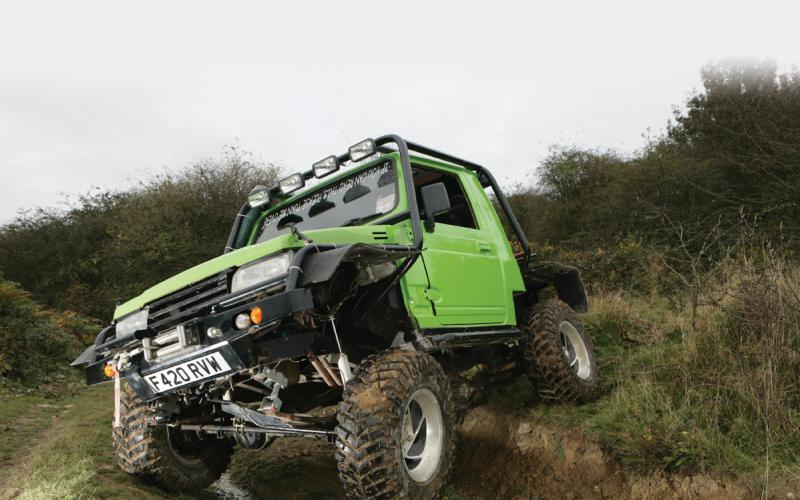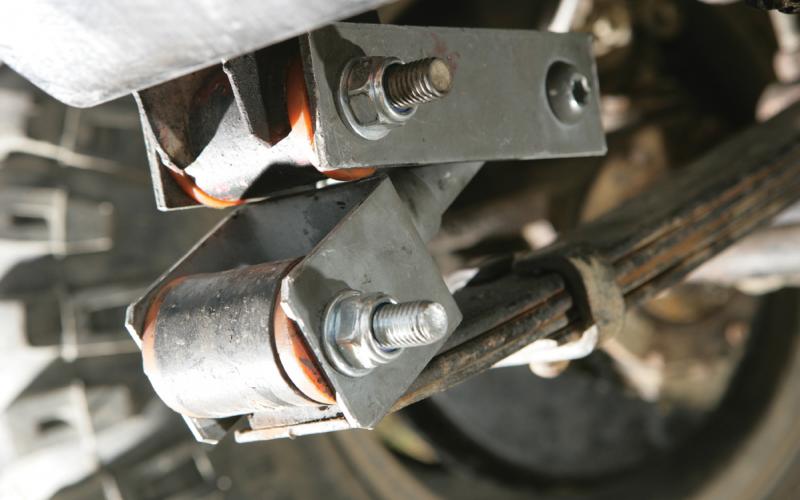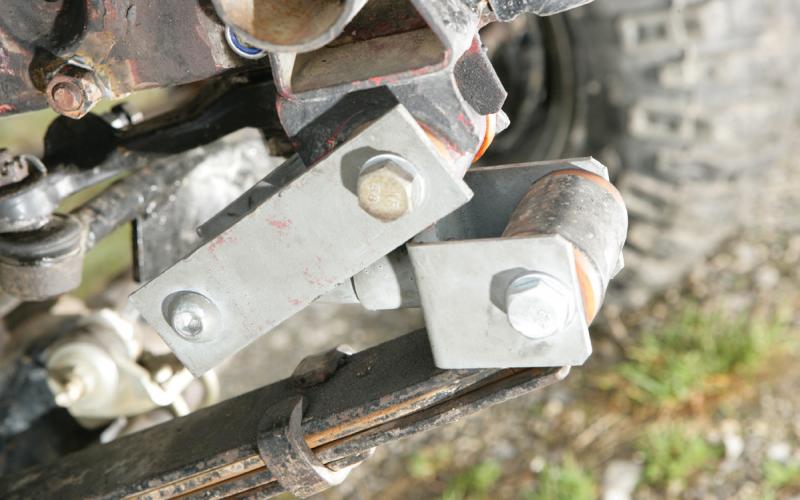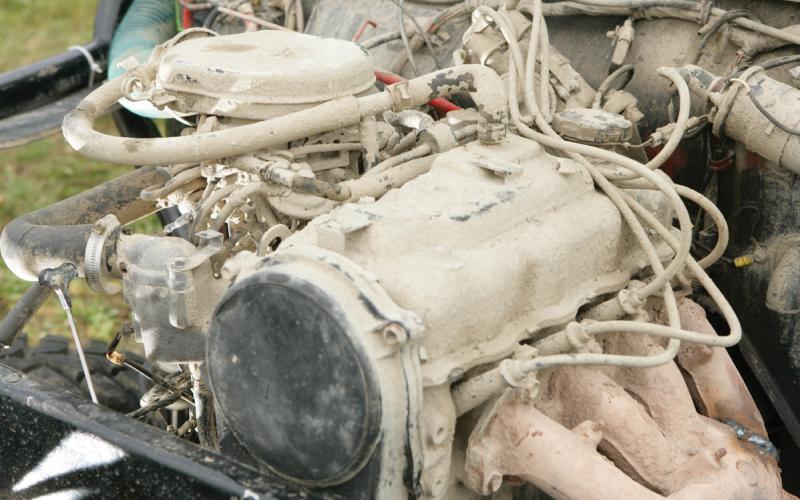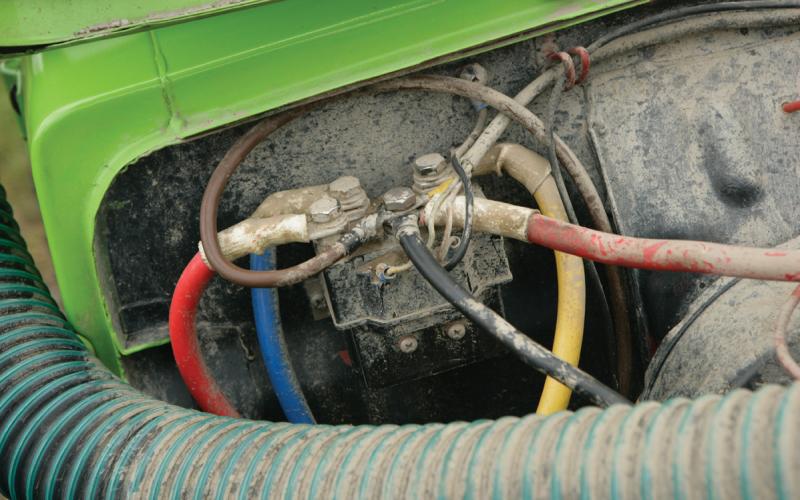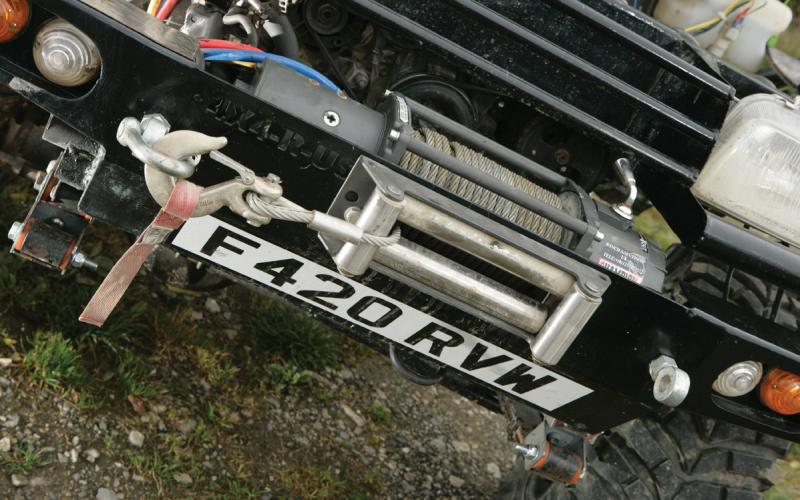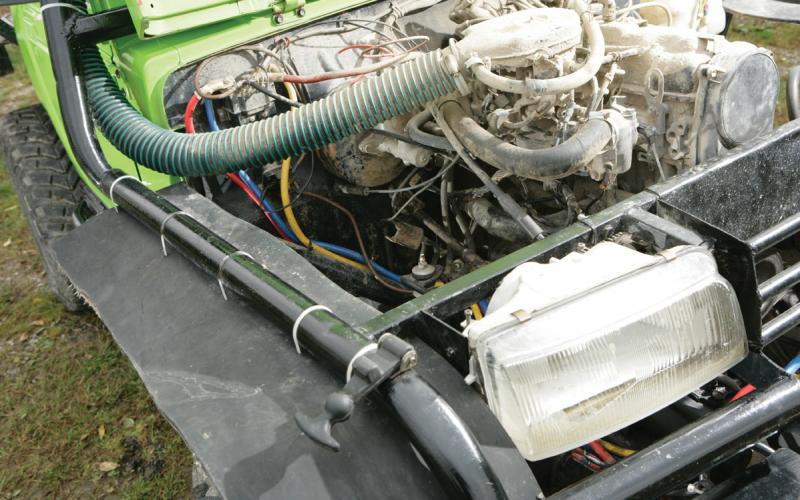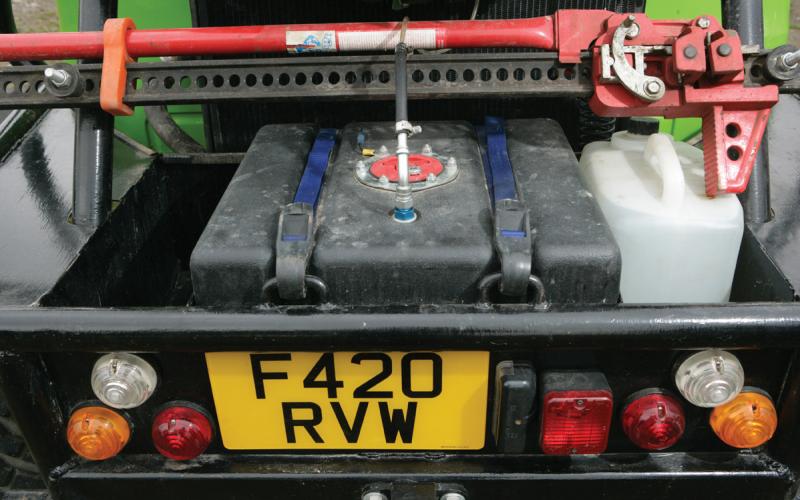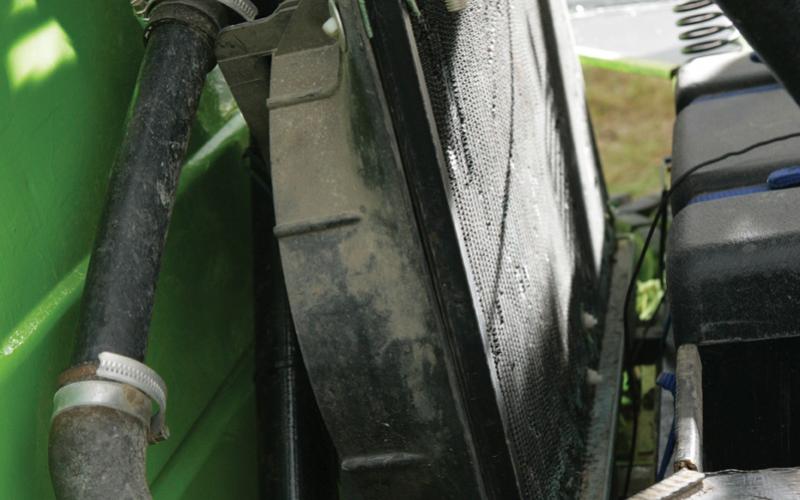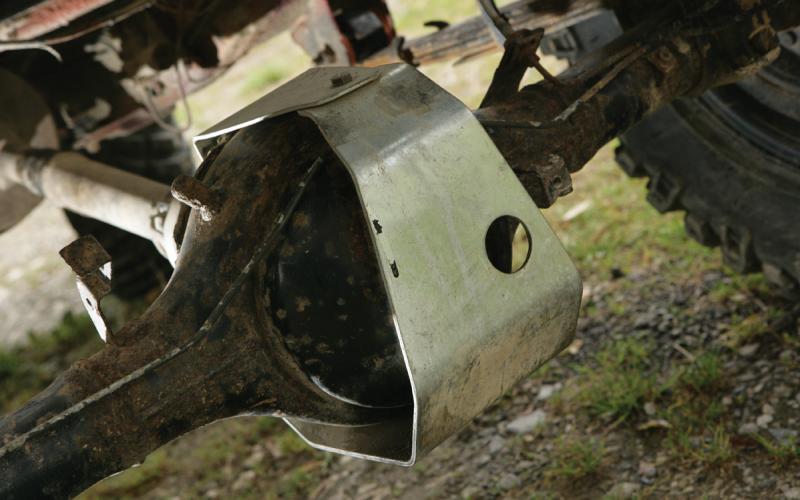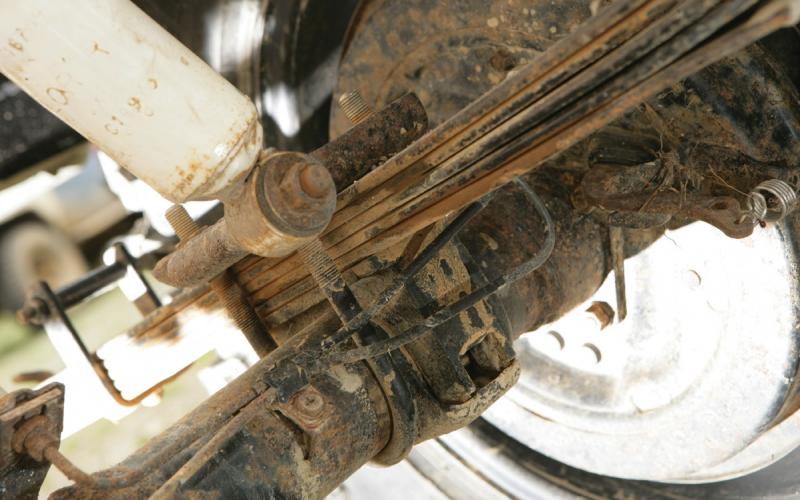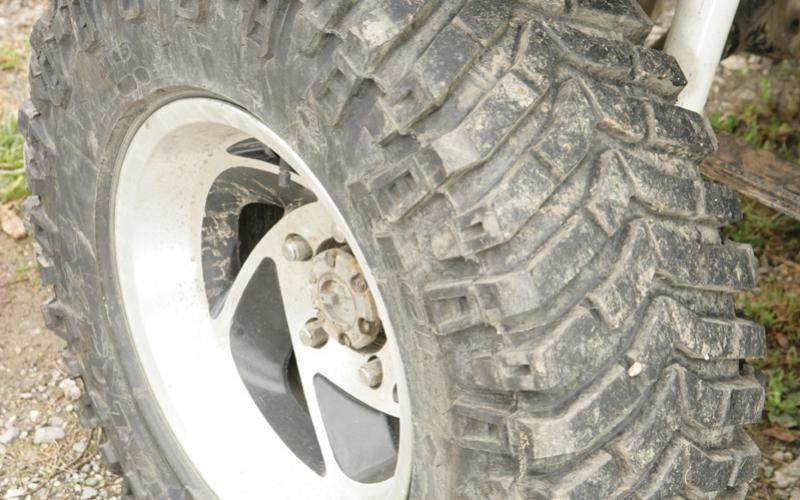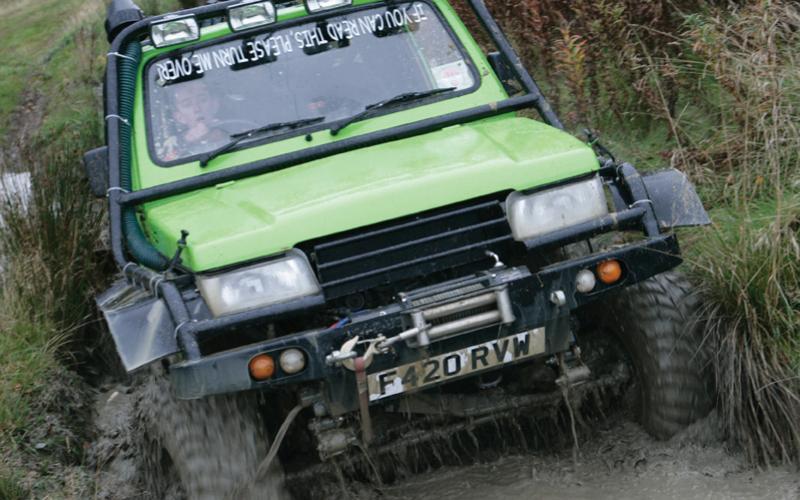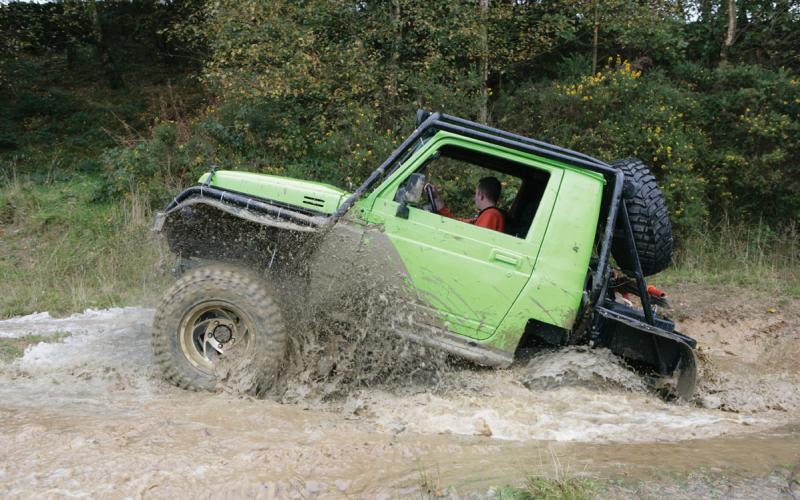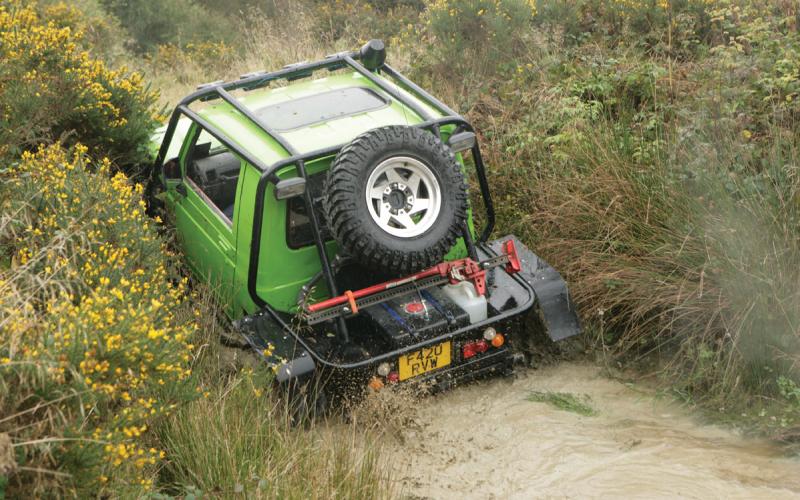Force of Habit
James Firth never intended his off-road habit to get out of hand. But when you look at his custom-built tray-back Suzuki SJ, you’ll agree that he didn’t manage to control his urges. At least he’s got a nice truck out of it, though…
There’s a lot of rubbish written about the ways in which us humans behave. At the risk of adding to the waste-heap, I’d like to venture some reflections of my own.
The thing is, we’re conditioned to think that our actions are themselves solely motivated by former actions, so that there is a chain of cause-and-effect lying behind everything we do. If we tell a lie, we’re told, we’ll end up telling a load more lies in order to cover our tracks. If we steal, we end up stealing again and again (and, most probably, lying) because we’re driven to it in order to sustain whatever level of gain we achieved from the first act of theft.
There’s a ring of truth in this. But it’s certainly not the case that past actions are the only motivating factor behind current and future actions. There’s a whole aetiology that’s missed in this simplistic account. [Editor’s note: no, I haven’t a clue either]
If I tell a lie, I begin to form a habit. The next lie is easier, because I’ve broken my fibbing duck, and already squared the idea of disingenuity with my self-image. I can lie, I reason, and not allow it to impact upon who I am.
That’s rot, of course. Every action we do has an impact upon our personality, upon our character. And that’s why the action-centred account of human agency, as I think it may be called, is faulty. Because unless we recognise that actions aren’t in any way disconnected from who we are as people (‘anthropology’), then we’ll be unable to articulate any firm basis for our moral judgments.
The point is plain: actions flow from who we are, and what we do forms our character. If I tell a lie, it doesn’t lead to more lies because I’m forced to cover my tracks. Rather, it leads to more lies because I start to become the sort of person who lies; just as I may, after doing it once, become the sort of person who smokes, watches Miss Naked Beauty 2008 or turns up late to work.
It would take a professional ethicist to unpack what this approach really means in terms of our view of the world. The significant insight is that the first time we perform an action we begin to form a habit associated with repeated performance of it. And once the habit becomes firmly entrenched, there’s no escaping its force.
So it is with off-road enthusiasts. Most 4x4 fanatics will tell you that they first became involved in the pastime after joining a friend on some off-road related activity or other. Sooner or later, following recognition that mud-bashing is one of the more enjoyable ways to spend their time, such people invest in a vehicle of their own. And although nine out of ten of them vigorously assert that they’ll not be investing in any upgrades for their truck, the vast majority have forked out on some basic mods within a few months of ownership.
This familiar story just about captures James Firth’s induction into the muddy world of off-road enthusiasm. Two and a half years ago, he jumped into the passenger’s seat of his friend’s Range Rover Classic with no intention of buying a truck of his own. A few trips later, he was coming around to the idea that a ‘cheap little Suzuki’ would be a worthy addition to his driveway.
Once the SJ was purchased, James decided that a set of Mud-Terrain tyres would be a good idea – and while he was at it, he reasoned he may as well hike the suspension up a couple of inches, as well.
In light of what we’ve established concerning the human propensity to form habits, you won’t be at all surprised to learn that the vehicle you see in the photographs is the result of what James rather sheepishly describes as a ‘snowballing’ process. ‘I suppose I’ve found it hard to know where to stop,’ he admits. ‘There’s always something that will enhance the SJ’s abilities in the rough stuff.’
Compared to the current specification, James’ first round of modifications to the SJ appears relatively restrained. He replaced the standard road tyres with a set of 31-inch remoulds, having made room beneath the arches by raising the leaf springs by two inches. This was achieved simply through the use of extended shackles – and had a noticeable effect on the way the Suzuki handled on the road.
The result was that James realised the SJ would from now on function primarily as an off-road vehicle. This freed him to indulge his more extreme tastes, and a Loc-Rite differential soon appeared in the rear axle. An SJ410 transfer case was also slotted in place of the existing SJ413 unit, in order to lower the gearing and give greater control at slow speeds.
Despite the SJ’s new ability to stroll across uneven terrain, James knew that the safety of its occupants would be enhanced by the installation of four-point racing harnesses. ‘Even at slow speeds, things can go wrong,’ he muses, ‘and I’d sooner be strapped into a racing harness if I’m hanging upside down than relying on a normal seatbelt to save me.’
This reasoning is certainly sound, and it’s true that, just like lies, one modification typically leads to another. But it’s also true that by this time, James was well and truly hooked on off-roading, and the habit of modding his truck was proving hard to kick.
So it’s something of a surprise to learn that the SJ stayed in this state for a fair time before James attacked it with a carving knife to create the monster you see here. ‘I got talking to someone who had their own workshop,’ he reports, ‘and we decided to have a play with the pipe bender and welder. The result was this thing!’
In fact, James’ original intention had been to convert the SJ into a pick-up. Once the process of removing the rear bodywork had commenced, however, he realised that it had more holes in it than the Government’s economic policy. Either an entirely new body would need to be found for the chassis (which was itself in reasonably good order), or something more dramatic would have to ensue.
The latter option rapidly became the favoured one, for reasons of cost and because the idea of building something completely different was growing on James. While the angle grinder was being waved about, James and his build team lopped off the SJ’s front wings. The reasoning was that, if a tray-back design would facilitate rear wheel travel of pant-wetting dimensions, the front end might as well be capable of following suit.
So it is that James’ Suzuki now looks as if it comes from the set of Mad Max, and people routinely assume the front end is lifted from a Vitara. In fact, the lights and grille were taken from a Mitsubishi Space Wagon and modified to sit neatly atop the 4x4’R’Us winch bumper. This provides a home for the 9500lb Champion winch, with internal controls, which ensures James’ ability to rescue himself if he gets stuck on solo expeditions.
Power currently comes from a 1.6-litre eight-valve Vitara engine, which James felt would be more capable of shifting the SJ’s bulk than the original 1.3-litre lump. The engine is used in conjunction with the car’s original gearbox, and the 410 transfer case remains in place. This provides a satisfying level of performance, but James isn’t entirely happy: he’s planning to move to diesel power in the near future.
Lest this appears as further evidence of James’s burgeoning modification habit, he is keen to assert the rationale behind his proposed installation of a 2.4-litre Hyundai van engine. ‘If I bring the Hyundai gearbox across with the engine, I’ll gain a crawler first gear, which will be perfect for controlled progress in stiff terrain. The diesel engine will also perform better in water, and should be a bit more economical to run.’
There’s no doubting James’ commitment to maximising his SJ’s giant-gobbling credentials. And because he recognises that his appetite for hardcore off-roading could land him in hot water, he’s taken the precaution of installing an eight-point external roll cage.
Not that James has any intention of turning the SJ over. But, despite 30mm spacers on the wheel rims, it’s been impossible to avoid compromising the vehicle’s stability in order to make the most of the suspension set-up. A spring-over-axle conversion produces a two-inch lift, while James’ original extended shackles have been replaced by custom-made ‘Z’ components. These are designed to swivel and open, like a pair of scissors being held in someone’s hand, to create multi-directional travel at each corner. Given that the four wheels are literally positioned at the extremities of the vehicle, this makes for a mightily impressive ground-hugging ability.
The proof of this SJ-shaped pudding is in its performance at a series of local trials events, where James has enjoyed notable success from the comfort of his Toyota MR2 driver’s seat. The home-brewed snorkel has delivered the goods in the wet stuff, and the rear-mounted spare tyre ensures that there is nothing to limit the vehicle’s impressive departure angle.
Such is the extent of James’ modifications to the SJ, it’s not far from being a full-on challenge truck. Regular hardcore winching would probably require him to replace the standard car batteries, currently charged through a 90-amp Range Rover alternator, with heavy-duty components. But the inboard petrol tank, rock sliders, Pro-Comp steering damper and ES3000 shock absorbers are textbook examples of challenge-spec mods.
It would be possible to make a case that the current fun days for which James mainly uses the SJ represent a waste of its talents – a bit like Leona Lewis choosing to sing at the local pub’s karaoke night. But, of course, that rather misses the point of this particular vehicle, because James’ motivation has not been the context in which he uses the SJ. Instead, this truck is the result of an addiction to modifying off-roaders, pure and simple.
So it’s no surprise that when I ask whether James has any plans to alter the vehicle further, the answer is resoundingly positive. ‘I think a rear winch will be the next addition,’ he states. ‘Oh, and there’s the engine transplant to think about. And I’d like to adjust the rear end, so that it forms more of a dovetail, which will necessitate further changes to the suspension set-up…’
All in all, then, it’s fair to say that James’ off-road ambitions have come a long way since the days when all he was after was a ‘cheap little Suzuki.’ If modifying 4x4s is a habit like smoking, this vehicle is the equivalent of 100-a-day. But then, unlike smoking, James’ SJ makes it clear that not every habit is a bad one.




